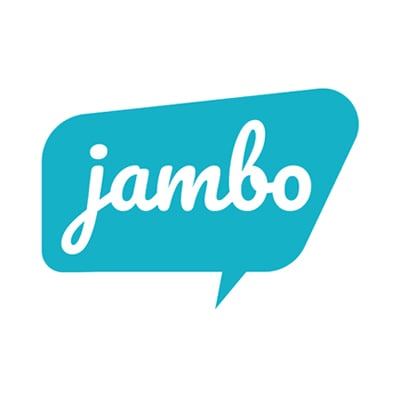
Involucrar eficazmente a las partes interesadas es esencial para el éxito de cualquier proyecto u organización. Sin embargo, la implicación de las partes interesadas no es una tarea puntual, sino que requiere atención continua, adaptabilidad y un enfoque estratégico.
En este blog analizaremos cinco buenas prácticas de eficacia probada que te ayudarán a establecer relaciones más sólidas, fomentar una participación significativa y garantizar que las partes interesadas se sientan valoradas durante todo el ciclo de vida del proyecto. Tanto si acabas de empezar como si quieres mejorar tus métodos actuales, estos consejos te guiarán hacia una participación más impactante.
¿Cómo mejorar el compromiso de las partes interesadas?
Es fácil estancarse en la monotonía de las tareas diarias, sobre todo cuando tu proyecto se llena de trabajo. Sin embargo, la implicación eficaz de las partes interesadasrequiere una atención continua porque los entornos cambian continuamente: tus partes interesadas, los acontecimientos mundiales y los problemas a los que se enfrentan tus comunidades evolucionan constantemente.
Puntos clave para mejorar la participación de las partes interesadas:
- Reevalúe continuamente sus procesos de participación. Lo que funcionaba antes puede que no funcione ahora. Permanezca siempre abierto a nuevas ideas, comentarios y métodos mejorados.
- Implíquese en todas las fases del proyecto. Las distintas fases pueden requerir diferentes estrategias de participación. Aproveche estas transiciones para reflexionar y adaptarse.
- Incorpore la reflexión y la capacidad de respuesta periódicas. Cuanto más a menudo revise la eficacia de su compromiso, más eficazmente podrá mitigar los riesgos y actuar en consecuencia.
Recuerde que la participación de las partes interesadas es un proceso de mejora continua y no un acontecimiento puntual. Establecer relaciones sólidas y dinámicas genera resiliencia y un mayor éxito del proyecto.
5 buenas prácticas para mejorar la participación de las partes interesadas
1. Definir el éxito
Comience su proyecto definiendo sus objetivos y lo que significa para su organización y sus comunidades una participación satisfactoria de las partes interesadas.
- Considerar un valor social más profundo y un impacto positivo duradero más allá del cumplimiento o la satisfacción de los requisitos básicos.
- Pregunte: ¿Qué significa el éxito para las partes interesadas? Tal vez sea que se sientan implicados, que se les escuche o que se establezcan asociaciones a largo plazo.
- Definir indicadores mensurables (KPI) relativos a los resultados del compromiso.
Consejos para el éxito:
- Discuta abiertamente su definición de éxito con las partes interesadas desde el principio para llegar a un entendimiento mutuo.
- Una visión compartida refuerza el capital social y favorece una mejor colaboración cuando surgen retos.
2. Identifique a las partes interesadas y a las comunidades
Identificar a las partes interesadas es fundamental. Sea minucioso e incluyente.
- Vaya más allá de los límites geográficos; tenga en cuenta a todas las personas y grupos afectados o interesados.
- Tenga en cuenta los datos demográficos (grupos de edad, cuidadores), los grupos de interés, los centros sociales y las conexiones indirectas.
- Las herramientas y ejercicios de mapeo de las partes interesadas son muy valiosas para visualizar y clasificar quién es importante.
Consejos para el éxito:
- Sea flexible. Espere que su lista de partes interesadas evolucione a medida que aprenda más.
- Siga actualizando su comprensión y asegúrese de que no se pasa por alto ninguna voz.
Learn how to do a stakeholder mapping exercise →
3. Establecer un calendario de comunicación
Comprométase con un plan y un calendario de comunicación.
- Actualice periódicamente a sus interlocutores, aunque no haya información nueva. Las "no noticias" siguen siendo noticias valiosas.
- Determine la frecuencia de compromiso (semanal, mensual, trimestral) adecuada para su proyecto.
- Planifique una comunicación honesta y transparente, sobre todo cuando se produzcan cambios o retrasos.
- Prepare métodos para comunicar actualizaciones urgentes fuera de los horarios habituales.
Consejos para el éxito:
- La coherencia genera confianza y credibilidad.
- Si los plazos cambian, comunique proactivamente el motivo y reafirme su compromiso con la transparencia.
4. Lleve un registro de todas sus promesas
Cumplir las promesas es crucial para la confianza y la credibilidad.
- Registre todos los compromisos, ya sean grandes o pequeños, independientemente de quién los haya contraído.
- Registre todas las interacciones con las partes interesadas para mantener un historial completo.
- Utiliza software de gestión de las relaciones con las partes interesadas (SRM) u otras herramientas para hacer un seguimiento del estado y el progreso de las promesas.
- Integre el seguimiento en sus informes para facilitar la organización y la transparencia.
Discover how the right stakeholder engagement software can elevate your engagement strategy→
5. Eliminar los obstáculos a la participación
Identificar y eliminar los obstáculos que impiden a las partes interesadas participar de forma significativa.
Considéralo:
- Comprender las preferencias y limitaciones de su público: ¿Cuándo y cómo prefieren interactuar?
- Inclusividad: ¿Son accesibles y acogedores los formatos, los lugares y el lenguaje?
- Uso de la tecnología: Ofrezca opciones virtuales, múltiples horarios de reunión u otras herramientas para adaptarse a diferentes horarios.
- Relaciones con la comunidad: Vaya a donde están las partes interesadas en lugar de esperar que le visiten a usted.
- Apoyos fundamentales: La alimentación, el transporte, el cuidado de los niños u otros apoyos pueden suponer una gran diferencia.
Consejos para el éxito:
- Pida directamente a las partes interesadas su opinión sobre cómo quieren participar.
- Experimente con nuevos formatos y busque opiniones continuamente.
- Adapte su plan de compromiso en función de lo que aprenda.
¿Cómo gestionar la falta de compromiso de las partes interesadas?
La falta de compromiso puede deberse a muchos factores, como fallos de comunicación, fatiga de las partes interesadas, desconfianza, problemas de calendario o falta de valor percibido.
Para solucionarlo:
- Reevalúe si sus enfoques de participación satisfacen las necesidades de las partes interesadas.
- Póngase en contacto directamente con ellos para conocer sus barreras y preferencias.
- Actualice sus tácticas de compromiso y elimine o reduzca los obstáculos a la participación.
- Refuerce la importancia y los beneficios del compromiso. Es más probable que las partes interesadas participen cuando ven un impacto tangible.
- Considere la posibilidad de recurrir a intermediarios o líderes comunitarios de confianza para que le ayuden a conectar.
Los esfuerzos constantes, la transparencia y una auténtica capacidad de respuesta suelen reavivar el compromiso.
¿Cuáles son las consecuencias de no controlar la participación de las partes interesadas?
Descuidar la participación de las partes interesadas puede tener graves consecuencias negativas:
- Pérdida de confianza y credibilidad ante las comunidades y los socios.
- Aumento de riesgos como conflictos, retrasos en los proyectos o desafíos legales.
- Toma de decisiones deficiente por falta de aportaciones diversas.
- Impactos sociales, medioambientales y económicos negativos.
- Deterioro de la reputación y reducción de la capacidad para conseguir futuras asociaciones o financiación.
Un compromiso incoherente, poco sincero o mal gestionado puede alienar a las partes interesadas en lugar de potenciarlas.
¿Por qué es importante mejorar la participación de las partes interesadas?
El compromiso de las partes interesadas es un componente dinámico y vital para el éxito del proyecto. Definiendo objetivos claros, identificando minuciosamente a las partes interesadas, manteniendo una comunicación coherente, cumpliendo sus promesas y eliminando los obstáculos a la participación, se sientan unas bases sólidas para establecer relaciones significativas.
El compromiso debe verse como un proceso evolutivo basado en la reflexión y la capacidad de respuesta al cambio, no como una actividad de talla única.










